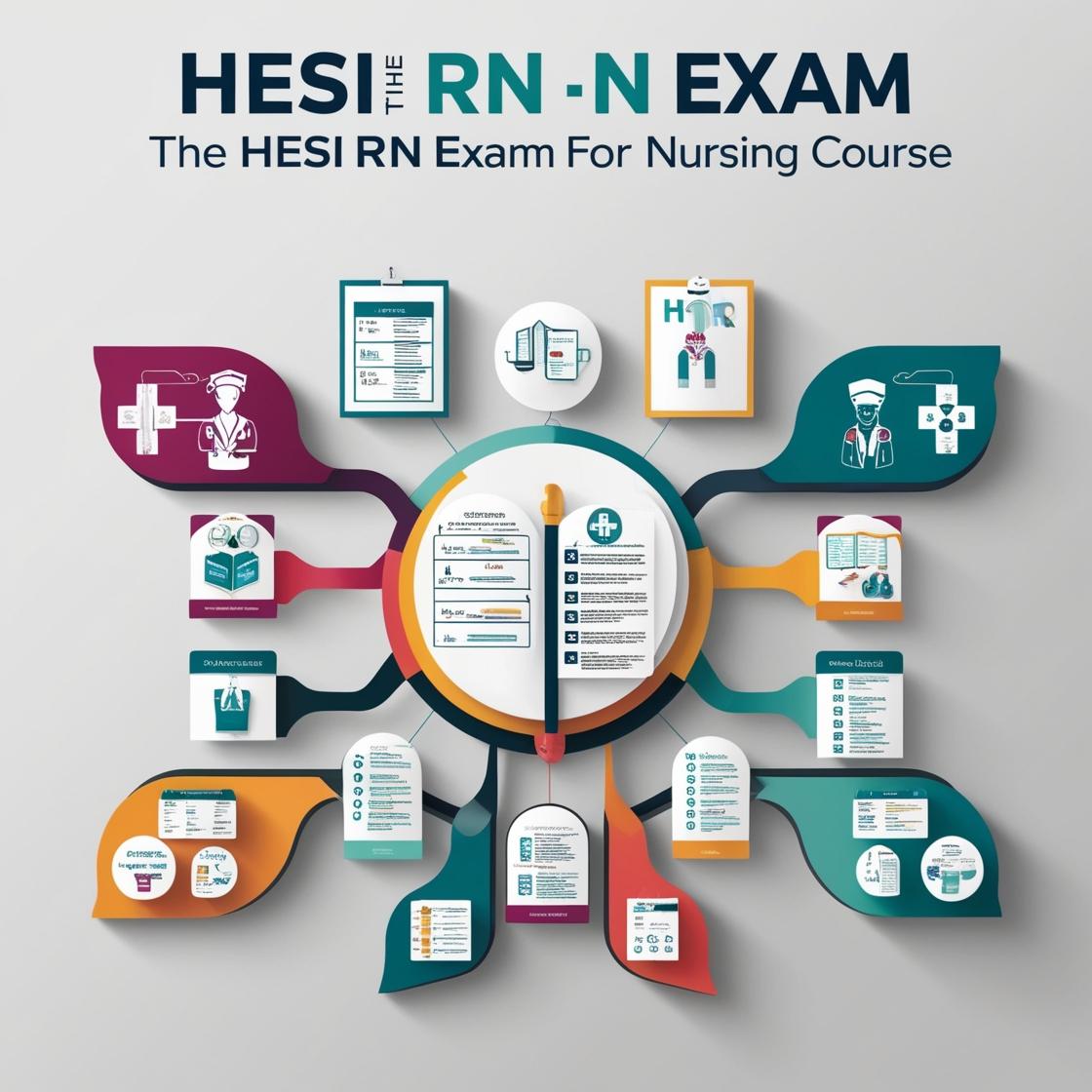HESI RN
HESI RN Medical Surgical Practice Exam
1. A CD4+ lymphocyte count is performed on a client infected with HIV. The results of the test indicate a CD4+ count of 450 cells/L. The nurse interprets this test result as indicating:
- A. Improvement in the client
- B. The need for antiretroviral therapy
- C. The need to discontinue antiretroviral therapy
- D. An effective response to the treatment for HIV
Correct answer: B
Rationale: A CD4+ count of 450 cells/L is below the normal range (500-1600 cells/mcL), indicating a decline in immune function in the client. Antiretroviral therapy is recommended when the CD4+ count falls below 500 cells/mcL or below 25%, or when the client displays symptoms of HIV. Therefore, the interpretation of this test result suggests that the client requires antiretroviral therapy to manage the HIV infection. Choices A, C, and D are incorrect because a CD4+ count of 450 cells/L does not signify improvement, discontinuation of therapy, or an effective response to treatment for HIV.
2. The nurse is preparing to administer amoxicillin (Amoxil) to a patient and learns that the patient previously experienced a rash when taking penicillin. Which action will the nurse take?
- A. Administer the amoxicillin and have epinephrine available.
- B. Ask the provider to order an antihistamine.
- C. Contact the provider to discuss using a different antibiotic.
- D. Request an order for a beta-lactamase-resistant drug.
Correct answer: C
Rationale: When a patient has a history of rash from penicillin, it indicates a potential allergic reaction to penicillin and other related drugs, such as amoxicillin. It is crucial to avoid administering penicillins to such patients unless there is no alternative. The nurse's best action in this situation is to contact the provider to discuss using a different antibiotic from a different class. This approach helps prevent potential severe allergic reactions. While epinephrine and antihistamines are used to manage allergic reactions, administering amoxicillin despite the known allergy is not advisable and could lead to serious consequences. Requesting a beta-lactamase-resistant drug does not address the issue of potential allergic reactions in this scenario.
3. A patient is being treated for shock after a motor vehicle accident. The provider orders 6% dextran 75 to be given intravenously. The nurse should expect which outcome as the result of this infusion?
- A. Decreased urine output
- B. Improved blood oxygenation
- C. Increased interstitial fluid
- D. Stabilization of heart rate and blood pressure
Correct answer: D
Rationale: 6% Dextran 75 is a high molecular-weight colloidal solution used to treat shock from burns or trauma. Colloids like 6% dextran 75 are plasma expanders that help increase blood volume, leading to improved heart rate and blood pressure stabilization. The infusion of plasma expanders does not typically decrease urine output. It primarily aims to stabilize circulation rather than affect blood oxygenation or increase interstitial fluid levels.
4. A nursing student is suctioning a client through a tracheostomy tube while a nurse observes. Which action by the student would prompt the nurse to intervene and demonstrate the correct procedure? Select all that apply.
- A. Setting the suction pressure to 60 mm Hg
- B. Applying suction throughout the procedure
- C. Assessing breath sounds before suctioning
- D. Placing the client in a supine position before the procedure
Correct answer: A
Rationale: The correct suction pressure for an adult client with a tracheostomy tube is typically between 80 to 120 mm Hg. Suction should be applied intermittently during catheter withdrawal to avoid damaging the airway. Assessing breath sounds before suctioning is important to ensure the procedure is necessary. Placing the client in a supine position before suctioning can compromise their airway; instead, the head of the bed should be elevated to facilitate proper drainage and reduce the risk of aspiration. Therefore, setting the suction pressure to 60 mm Hg is incorrect and would prompt the nurse to intervene and correct the procedure.
5. A client has a serum potassium level of 6.5 mmol/L, a serum creatinine level of 2 mg/dL, and a urine output of 350 mL/day. What is the best action by the nurse?
- A. Place the client on a cardiac monitor immediately.
- B. Teach the client to limit high-potassium foods.
- C. Continue to monitor the client’s intake and output.
- D. Ask to have the laboratory redraw the blood specimen.
Correct answer: A
Rationale: The best immediate action by the nurse in this situation is to place the client on a cardiac monitor immediately. A serum potassium level of 6.5 mmol/L indicates hyperkalemia, which can lead to life-threatening dysrhythmias. Monitoring the cardiac status is crucial to detect any potential arrhythmias promptly. Teaching the client to limit high-potassium foods (Choice B) may be important for long-term management, but it is not the priority at this moment. Continuing to monitor intake and output (Choice C) is important for assessing renal function but does not address the immediate risk of dysrhythmias. Asking to have the laboratory redraw the blood specimen (Choice D) is unnecessary since the current results indicate a critical situation that requires immediate action.
Similar Questions

Access More Features
HESI RN Basic
$89/ 30 days
- 50,000 Questions with answers
- All HESI courses Coverage
- 30 days access @ $89
HESI RN Premium
$149.99/ 90 days
- 50,000 Questions with answers
- All HESI courses Coverage
- 30 days access @ $149.99
